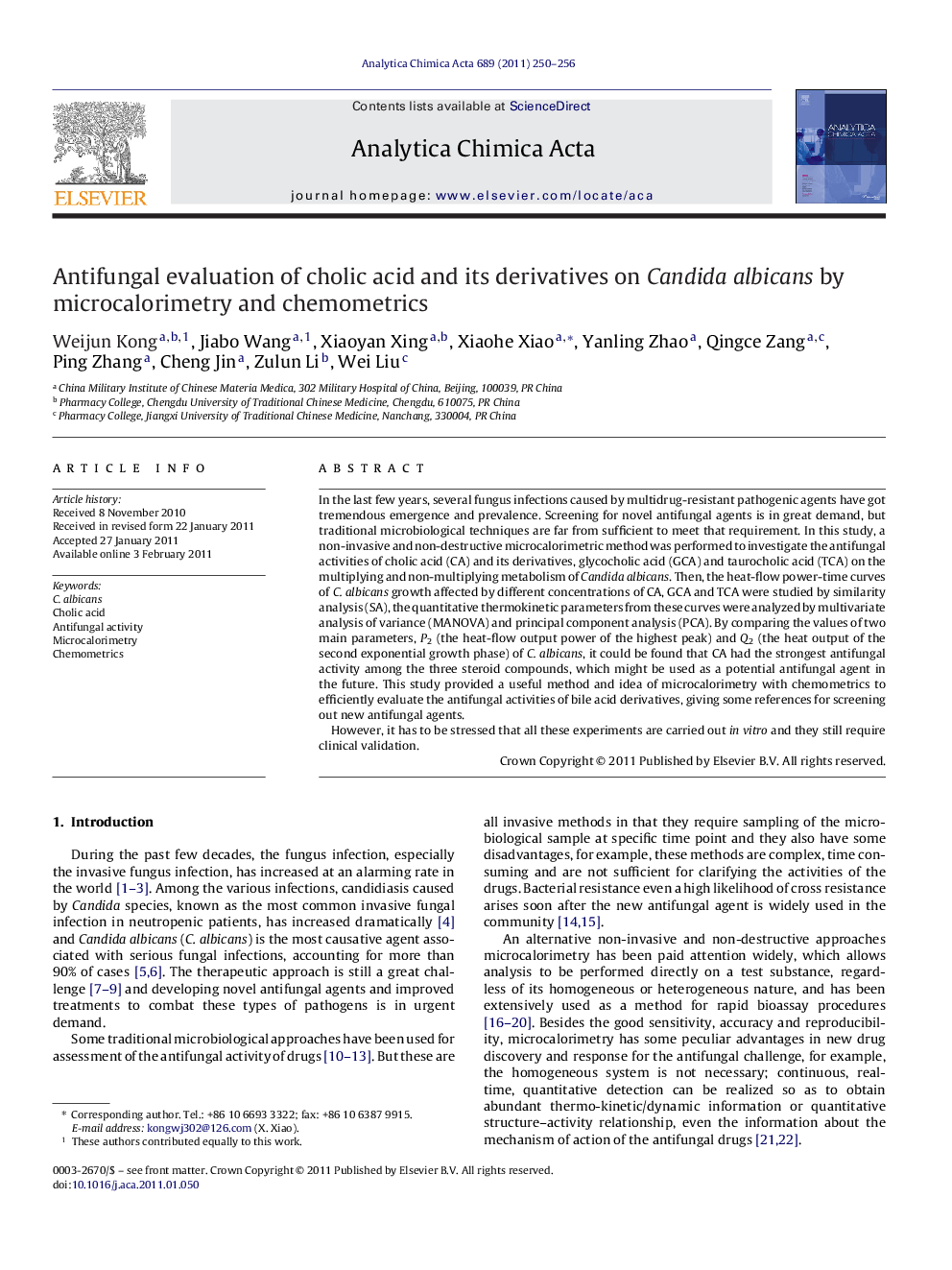| Article ID | Journal | Published Year | Pages | File Type |
|---|---|---|---|---|
| 1166239 | Analytica Chimica Acta | 2011 | 7 Pages |
In the last few years, several fungus infections caused by multidrug-resistant pathogenic agents have got tremendous emergence and prevalence. Screening for novel antifungal agents is in great demand, but traditional microbiological techniques are far from sufficient to meet that requirement. In this study, a non-invasive and non-destructive microcalorimetric method was performed to investigate the antifungal activities of cholic acid (CA) and its derivatives, glycocholic acid (GCA) and taurocholic acid (TCA) on the multiplying and non-multiplying metabolism of Candida albicans. Then, the heat-flow power-time curves of C. albicans growth affected by different concentrations of CA, GCA and TCA were studied by similarity analysis (SA), the quantitative thermokinetic parameters from these curves were analyzed by multivariate analysis of variance (MANOVA) and principal component analysis (PCA). By comparing the values of two main parameters, P2 (the heat-flow output power of the highest peak) and Q2 (the heat output of the second exponential growth phase) of C. albicans, it could be found that CA had the strongest antifungal activity among the three steroid compounds, which might be used as a potential antifungal agent in the future. This study provided a useful method and idea of microcalorimetry with chemometrics to efficiently evaluate the antifungal activities of bile acid derivatives, giving some references for screening out new antifungal agents.However, it has to be stressed that all these experiments are carried out in vitro and they still require clinical validation.
